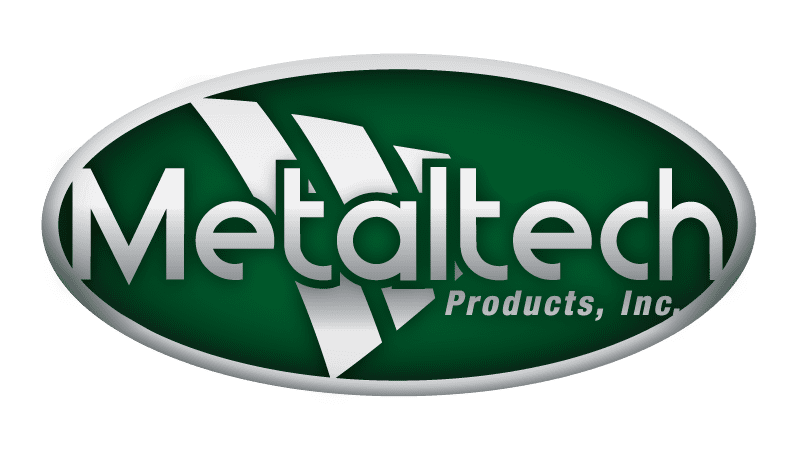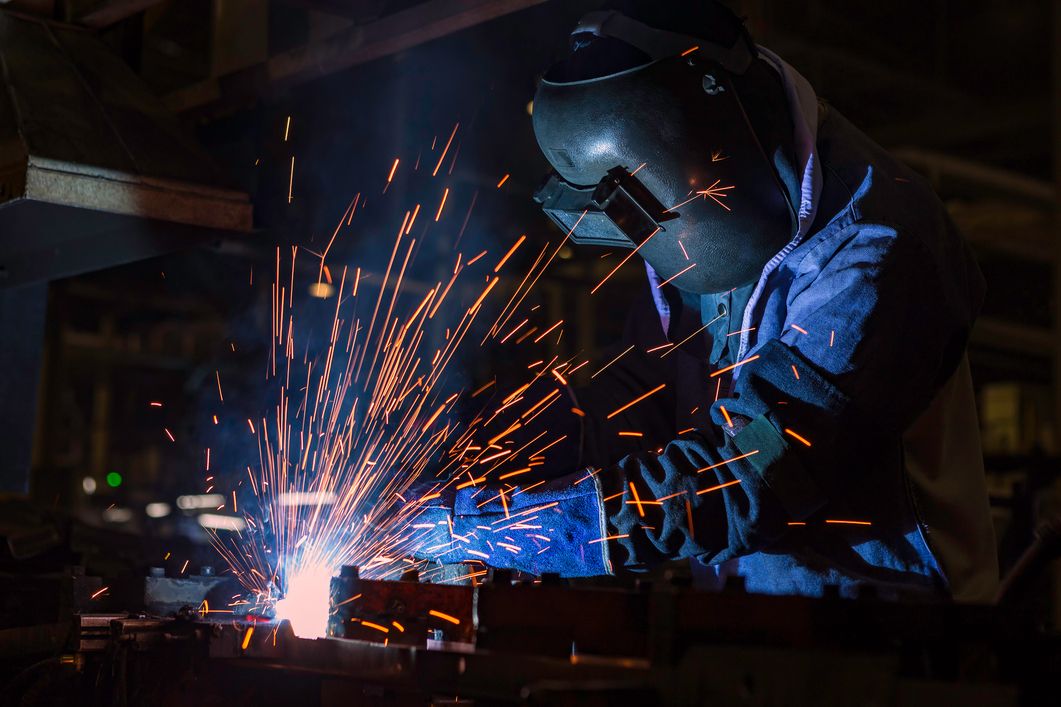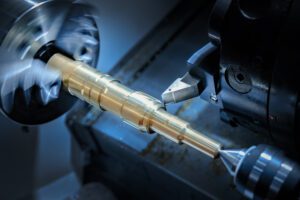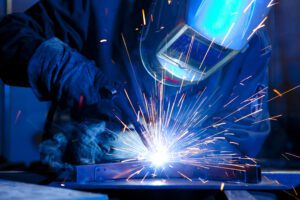Weld areas need protection from contaminants in the air. Atmospheric gases like oxygen, nitrogen, hydrogen and water vapor can impair welds and cause oxidation.
All types of arc welding require a shielding gas, whether you’re practicing GMAW (MIG welding) to join thicker materials or GTAW (TIG welding) to fuse thin metals.
Welding shielding gases influence your weld penetration, weld bead, arc stability, heat transfer and post-cleanup time. Your choice of a shielding gas depends on the materials and welding process. Choose an improper shielding gas, and you may end up with a weak, porous weld.
What are common shielding gases, and why are they so important? Learn more about the ins-and-outs welding gases.
What is Shielding Gas?
If you’re a welder, you want to ensure outside forces don’t impair your work. Shielding gases guard the weld area from atmospheric gases that would otherwise contaminate the weld and create structural issues, such as porosity. Welding gases can positively or negatively affect fume and spatter production, weld appearance and arc and metal transfers.
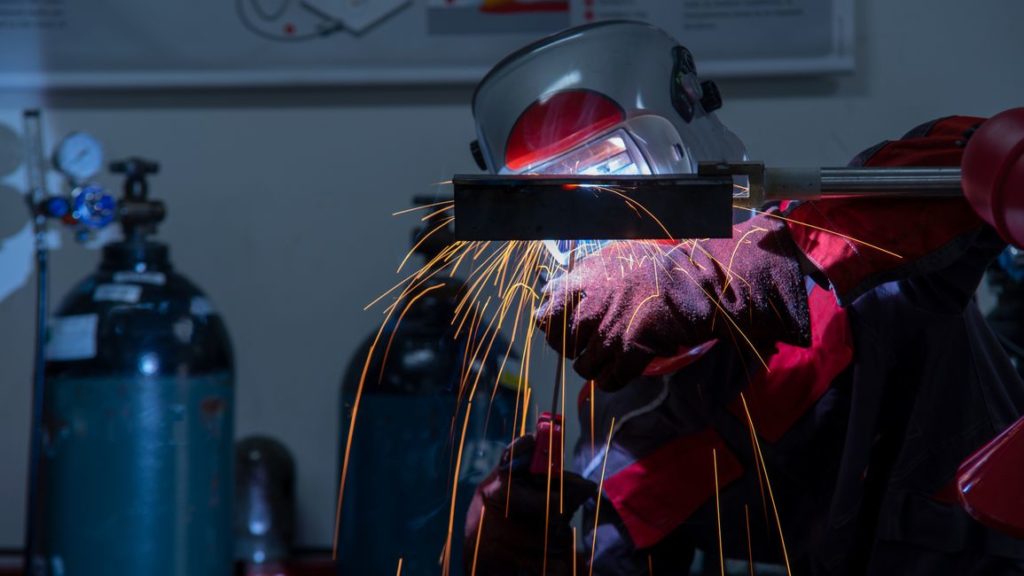
How to Choose a Shielding Gas
Many factors go into selecting a shielding gas—most importantly, the material type. Before you grab your welding gun, you’ll want to take stock of the project at hand. What requirements do you need to meet?
- Material. What kind of materials are you joining together? What filler metal are you using? Each type of metal has distinct properties, which determines the best shielding gas to use.
- Aesthetics. Is beauty a priority? The shielding gas you choose may reduce or enhance the bead appearance.
- Cleanup. Hot spatter can land on the metal you’re welding, your workspace or you. Spatter across a workpiece looks sloppy and takes time to spruce up. Shielding gas mixtures can affect spatter production.
- Penetration. Does the workpiece require deep weld penetration? Are you working with thin materials at risk of burn-through? Some shielding gases penetrate thick materials more effectively, while others help create narrow arcs.
- Fumes. Welding creates fumes. Carbon dioxide shielding gases produce more fumes than other options.
Common Types of Welding Gases
Shielding gases are used as pure gases or mixes. The three pure welding gases are argon, helium and carbon dioxide. Depending on your application, these gases can be used alone or in combination with other gases. Common supplementary shielding gases include oxygen, hydrogen and nitrogen, which you can add to pure gases to enhance their characteristics.
Argon Shielding Gas
Argon is a popular shielding gas for both MIG and TIG welding. Argon welding gas ionizes readily and has low thermal conductivity. It also has a lower flow rate due to its heaviness and how it blankets the weld area. Using argon shielding gas produces a stable, narrow welding arc with a low heat transfer. The arc’s size creates a narrow but deep weld penetration—perfect for fillet welds and butt welds.
Pure argon shielding gases are used with aluminum and other nonferrous metals, such as magnesium and titanium. If a more stable welding arc is needed, you can combine argon welding gas with carbon dioxide or oxygen. Seventy-five to 90% of argon welding gas is often mixed with 25 to 5% of carbon dioxide for arc stabilization or work with carbon steel.
Helium Shielding Gas
Helium is a light gas that requires significant flow rates, making it a more expensive option for welders with high-volume projects. Unlike argon, helium shielding gases do not ionize readily, and they require higher voltages to start the welding arc.
When you use a helium shielding gas, you produce a deep, wide welding bead. That’s why helium works well when joining thick materials together. Adding helium to other shielding gases affects the weld bead and welding speed.
Pure helium doesn’t complement all materials. On steel, pure helium has an erratic welding arc and produces quite a bit of weld spatter. Though aluminum, copper and magnesium can be used with pure helium, helium is often used to enhance gas blends for TIG welding and MIG welding applications.
Carbon Dioxide Shielding Gas
Carbon dioxide is the most reactive of all the common shielding gases. When using this shielding gas, welders must beware of the fumes created and the potential for oxidation. At certain temperatures—like those within a welding arc—carbon dioxide dissociates into carbon monoxide and oxygen, leading to oxidation as the two recombine when meeting the cooler base metal.
With the GMAW or MIG welding, CO2 shielding gas helps increase speed and improve weld penetration. The wider, deeper bead created from carbon dioxide is ideal for joining thick materials. CO2 shielding gas has an excellent heat transfer and results in well-balanced welds; however, it produces an unstable welding arc.
Another disadvantageous property of CO2 welding gas is its tendency to create spatter. If a welder uses this shielding gas, they can expect to spend more time doing post-welding cleanup. It’s common to combine argon and carbon dioxide to help reduce spatter and increase arc stabilization.
CO2 welding gas is often used on steel. Its hot temperature doesn’t pair well with aluminum and other thin metals.
Oxygen Shielding Gas
Oxygen is used as an additive to boost the properties of other shielding gases, including argon, carbon dioxide and helium. On MIG welding projects, oxygen is added at concentrations of less than 10% to enhance arc stability and reduce the weld puddle’s surface tension. In larger amounts, oxygen can cause brittleness.
Argon is often combined with 2 to 5% of oxygen. By adding oxygen, the welding arc improves, surface tension is reduced and spatter is minimized. Argon-oxygen combinations produce the “nailhead” welding profile on carbon steel.
As you might imagine, adding oxygen increases the risk of oxidation. If it reacts, oxygen creates porous deposits on the weld and workpiece. Copper, aluminum and magnesium can’t be used with oxygen shielding gases.
Hydrogen Shielding Gas
As another additive-only gas, hydrogen helps improve metal fluidity and adjust the profile and temperature of the welding arc. Hydrogen, like oxygen, is added to other shielding gases in concentrations of less than 10%. If misused, hydrogen can become trapped, causing weld porosity.
Hydrogen shielding gases work with copper, nickel and austenitic stainless steels. They create cleaner welds on stainless steels that are sensitive to oxygen. When you add hydrogen to argon-carbon dioxide blends, it counteracts oxidation and narrows the welding arc. Hydrogen gas shouldn’t be used with ferritic or martensitic steels as it can cause cracking.
Nitrogen Shielding Gas
Nitrogen shielding gases are used less commonly in welding. When joining some stainless steels, like duplex steels, nitrogen increases arc stability, weld penetration and corrosion resistance. Nitrogen should not be used on carbon steels as it promotes porosity.
Blends with nitrogen help prevent pitting and increase the properties of alloys made of nitrogen. Common mixes include hydrogen-nitrogen and argon-carbon dioxide-nitrogen.


Why are Gas Shields Necessary in Welding?
Aside from protecting the weld, shielding gases can influence the overall cost of the operation—from labor to materials.
Shielding gases affect the efficiency of your filler metal and how much spatter gets in the way. More spatter means more labor, as welders need time to clean the weld after it’s complete.
Additionally, the shielding gas controls the bead penetration. The right blend helps welders create the appropriate weld width and depth while avoiding unwanted burn-through. If weld aesthetics are important, choosing a suitable shielding gas can also prevent metal discoloration, especially when working with stainless steel.
Other working considerations include the fumes generated from welding. More reactive gas blends produce more fumes.
Metaltech Products, Inc. offers welding services to complete your custom metal components. Our AWS certified welders can manually perform MIG or TIG welding or operate our robotic welding machines for large volumes of precise, repeatable welds.
Request a quote today. Tell us about your project. Our team will help you make it a success.
